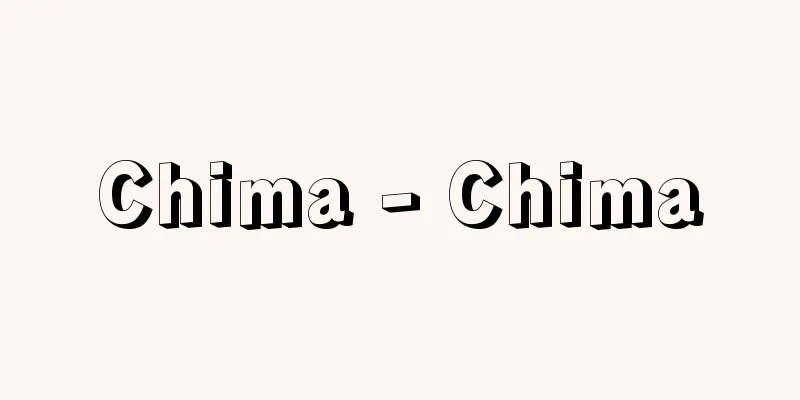Humanity book - Ninjobon

|
A genre of novels from the late Edo period. It succeeded sharebon, but unlike sharebon, it was mainly read by women and girls. It is the name of a realistic love story that was popular in Edo from the beginning of the Bunsei era (1818) to the beginning of the Meiji era (1868). The protagonists are young men and women from the city, and many of them feature one man and two or three women, depicting various aspects of love triangles or more. In addition to accurately depicting the customs of the city of Edo, which serves as the background, it also established a modern style of expression that treats dialogue and narration on an equal footing, and played a role in giving birth to Meiji-era customs novels and Kenyusha literature. However, this definition applies to works that were produced after Tamenaga Shunsui took the lead in ninjohon during the Tenpo era (1830-44), and ninjohon before that, during the Bunsei period, were immature fantasy novels that drew on music, theater, lectures, etc. The name ninjohon also became popular after Shunsui called his own works ninjohon (human interest books) in the preface to the four volumes of "Shunshoku Umegoyomi," and they are usually called chuhon (medium-sized books) along with kokkeihon (humorous books) due to their style, and the official name among fellow booksellers was chugata eiryomihon (medium-sized illustrated reading books), and in the early days they were also called nakihon (crying books) due to their content. While ninjyobon inherited many of the themes and expressive techniques from sharebon, they also added themes and expressions appropriate to the expected audience of women and young children, at the request of bookshops.Unlike sharebon, they moved away from the pleasure quarters, and, as the name medium-sized illustrated reader suggests, they were written as popular readers for dealing with affairs. It is generally considered to have begun with "Seidanmine no Hatsuhana" (1819), which was published after Jippensha Ikku collated and edited drafts by unknown authors; however, with the works of the second Nansen Shosomanhito (Tamenaga Shunsui) and Hanasanjin, the style gradually took on a more realistic tendency, and through Kyosanjin's "Kana Majiri Musume Setsuyo" (1831), and Shunsui's works such as "Shunshoku Umeji Hombi" (1832-33), it secured a position that asserted its complete originality in comparison with other Edo novels. Although Hanayamajin and Shotei Kinsui were also active, they were suppressed by the Tenpo Reforms' crackdown on public morals, and although they were revived at the end of the Edo period, they were soon swept up in the wave of modernization following the Restoration, and eventually dissipated into "series stories," or "series articles about public morals" that appeared in small Meiji newspapers. [Goya Jinbo] "About Human Interest Books" (included in "Yamaguchi Tsuyoshi Collected Works 4", Chuokoron-Shinsha, 1972) Volume 1, first volume, by Shunsui Tamenaga (master of Kyokuntei), published in 1832 (Tenpo 3), held at the National Diet Library "Spring Colors Umeji Honorable Beauty" Source: Shogakukan Encyclopedia Nipponica About Encyclopedia Nipponica Information | Legend |
|
江戸後期の小説の一ジャンル。洒落本(しゃれぼん)の後を受け、洒落本と違っておもに婦女子を読者とし、文政(ぶんせい)初年(1818)から明治初年(1868)にかけて江戸で流行した、写実的な恋愛小説の名称である。市井の青年男女を主人公に、多くは1人の男性に配するに2人ないし3人の女性をもってし、三角関係、またそれ以上にわたる情痴的恋愛の種々相を描くものである。背景となる江戸市井の風俗の的確な描写に加えて、会話と地の文を対等に扱う近代的な表現様式も樹立し、明治の風俗小説、硯友(けんゆう)社の文学を生む役割をも果たしている。ただ、以上のように定義づけられるのは、天保(てんぽう)(1830~44)に入って為永春水(ためながしゅんすい)が人情本をリードするようになってからの作品で、それ以前の文政期の人情本は、音曲、演劇、講釈などに取材した未熟な伝奇小説であった。人情本の名称も、春水が『春色梅児誉美(しゅんしょくうめごよみ)』四編序で彼自身の作品を人情本(もの)と称してから一般化したもので、普通にはその書型から滑稽(こっけい)本とともに中本(ちゅうほん)とよばれ、本屋仲間の公的な称呼としては中型絵入読本(ちゅうがたえいりよみほん)、さらにその内容から初期においては泣本(なきほん)とも称されていた。 人情本は洒落本からテーマや表現技術を多く受け継ぎながら、なお書肆(しょし)の要求で婦女子を読者と予想することでそれにふさわしい題材や表現を加え、洒落本と違って遊里から離れ、中型絵入読本の名称が示すように、通俗的な世話読本として執筆されたところに成立する。一般にそれは、無名作者の草稿を十返舎一九(じっぺんしゃいっく)が校合して出版した『清談峯初花(せいだんみねのはつはな)』(1819)を最初とするが、2世南仙笑楚満人(なんせんしょうそまひと)(為永春水)や鼻山人(はなさんじん)らの作品によってしだいに現実主義的な傾向を強め、曲山人(きょくさんじん)の『仮名文章娘節用(かなまじりむすめせつよう)』(1831)を経て『春色梅児誉美』(1832~33)以下の春水の作品で、他の江戸小説に対して完全に独自性を主張する位置を確保した。鼻山人や松亭金水(しょうていきんすい)らも活躍するが、天保の改革の風俗取締りによって弾圧され、幕末になって復活するものの、そのまま維新開化の波にのみ込まれ、「続きもの」とよばれる明治の小新聞(こしんぶん)の風俗読み物へと解消していった。 [神保五彌] 『『人情本について』(『山口剛著作集4』所収・1972・中央公論社)』 初編 巻1 為永春水(狂訓亭主人)作 1832年(天保3)刊国立国会図書館所蔵"> 『春色梅児誉美』 出典 小学館 日本大百科全書(ニッポニカ)日本大百科全書(ニッポニカ)について 情報 | 凡例 |
<<: Pregnancy - ninshin (English spelling) pregnancy
>>: Ninjyobanashi Bunshichi Motoyui - Ninjyobanashi Bunshichi Motoyui
Recommend
Cork tissue
… In Japan, all of the amount used is imported fr...
digital switching network
...Digital switching is a general term for all of...
White wisteria - White wisteria
A deciduous shrub of the Buddlejaceae family. It ...
Kreidolf, E. (English spelling) KreidolfE
...In East Germany, there was Werner Klemke, who ...
Huayang Yì Zhèn Huì (English: Huá yáng yì zhèn huì)
A Chinese charity organization. Its official name ...
Umitanago (sea bream) - surfperch
A marine fish belonging to the family Umitanidae ...
Caulerpicin
...In Polynesia, it is eaten as a salad. However,...
Eclipsing variable star
Also known as an eclipsing binary. A binary system...
Armillariella tabescens (English name) Armillariella tabescens
…[Rokuya Imaseki]. . … *Some of the terminology t...
Chozan Islands
An archipelago dotted in the Yellow Sea, east of t...
Atssaisen - Atssaisen
…During this time, firecrackers are set off and h...
Architecture
Overview General Provisions Architecture refers t...
Egyptology - Egyptian Calyx (English spelling) Egyptology
A specialized field that studies ancient Egyptian ...
Amusium japonicum formosum (English spelling) Amusium japonicum formosum
…[Tadashige Nabe]. . … *Some of the terminology t...
Yoshitoshi Shiba
Year of death: November 16, 1508 (December 8, 1508...









